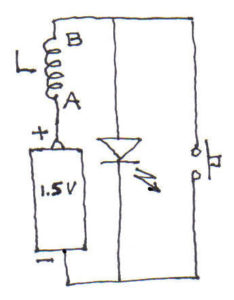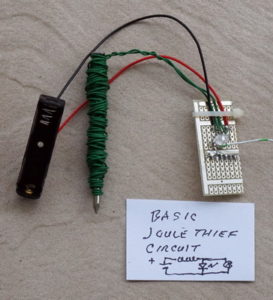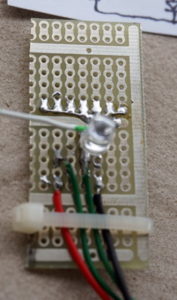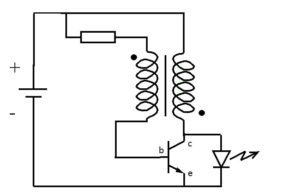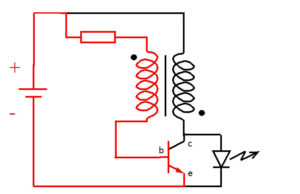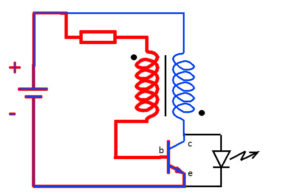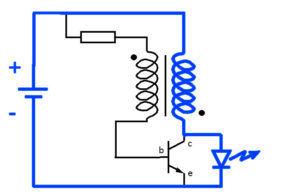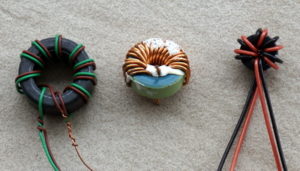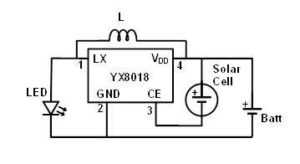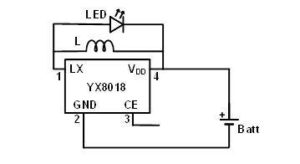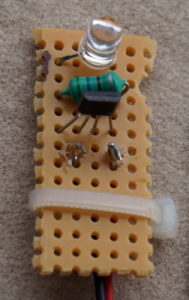My friend, the Joule Thief
Flashlight enthusiasts and others always lament discarding batteries that no longer have sufficient energy to activate their lights and equipment.
They want to squeeze the very last bit of energy from their used batteries.
In 1999, Z. Kaparnik (UK) wrote an article entitled “One Volt LED – A Bright Light” .
In 2002, Clive Mitchell coined the name “Joule Thief“.. It is also called a Vampire or Zombie circuit.
Since the there have been many variations on this simple voltage boost circuit.
The main advantage of the Joule Thief is that a single 1.5 volt cell can light a white LED up to 80+ hours by draining it down to 0.6 volts or less by using a collapsing magnetic field to boost the output voltage.
Although the light output is minimal, it is sufficient in a totally dark room to light and navigate around. It is often used as a night-light and power blackout light.
Oftentimes you can construct one at no cost from a typical electronics junk pile.
The basic Joule Thief circuit
- Current cannot flow because 1.5 vdc is not enough to light the LED
- Closing the circuit to allow current to flow through inductor L, through the switch and back to the cell The current creates a magnetic field around inductor L.
- Opening the circuit causes the magnetic field to collapse inducing an opposite current flow in inductor making Point B more positive with respect to point A. The combined voltage of the cell and the collapsing magnetic field overcomes the LED voltage drop causing a brief flash of light.
- If you can activate and deactivate the switch fast enough (the flicker rate) the human eye will perceive it as a constant light source.
Basic Joule Thief demonstration circuit with inductor wire-wound around a large nail. The loose wire can be swiped across the solder pads to creat a rapidly blinking LED.
An NPN transistor self-oscillating Joule Thief circuit
- 1.5 vdc cell
- 1 KOhm resistor
- Ferrite toroid 1:1 transformer
- NPN transistor
- LED
How it works:
Stage 4: Base current increases the Emitter-Collector current saturating the toroid. The transistor is cut off causing the magnetic field to collapse.
Stage 5: The magnetic field collapses, inducing a current adding to the cell current to momentarily light the LED.
Stage 1 through Stage 5 repeats in a self-oscillating cycle. To the naked human eye, the rapidly flickering of the LED is perceived as a constant light source.
Joule Thief / 2N3904 version
Joule Thief circuit using a hand-wound recycled mini-toroid from an old PC power supply.
- 2N3904 (NPN) @ $0.04 (100/$3.80)
- 1K Resistor @ $0.02 (100/$1.70)
- White 5mm LED @ $0.02 (200/$3.52)
- AAA Holder @ $0.15 (10/$1.45)
- AA Holder @ $0.26 (5/$1.33)
- Toroid 10mm @ $0.08 (10 /$1.77)
- Wire
Total cost: AA Joule Thief $0.42
Joule Thief / YX8018 version
The YX8018 chip is used in Garden Solar Lights. In daytimethe solar cell charges a NiMH cell. At night the YX8018 acts like a Joule Thief.
Solar Garden Light using a YX8018 chip
By eliminating the solar cell and replacing the NiMH cell with a 1.5 vdc cell we have a simple and cheap Joule Thief circuit
YX8018 chip pinout
Three component Joule Thief plus 1.5 vdc cell
- YX8018 @ $0.16 (50/$7.80)
- 560 uH inductor @ $0.04 (50/$1.58)
- White 5mm LED @ $0.02 (200/$3.52)
- AAA Holder @ $0.15 (10/$1.45)
- AA Holder @ $0.26 (5/$1.33)
Total cost: AA Joule Thief $0.48
https://ez.analog.com/community/university-program/blog/2014/11/14/hacking-an-led-solar-garden-light
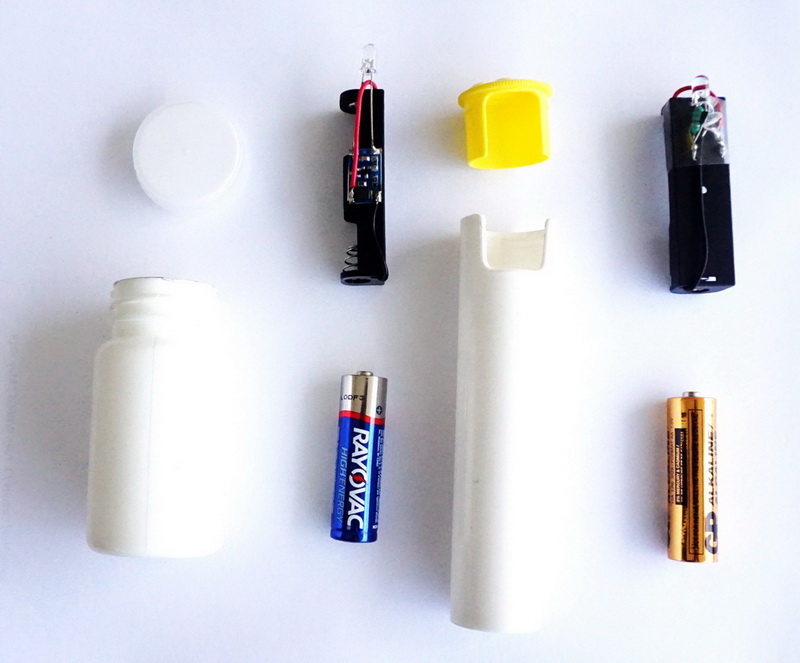

References and notes:
Joule: Electric current of one ampere passes through a resistance of one ohm for one second.
Wikipedia https://en.wikipedia.org/wiki/Joule_thief
In November 1999 issue of Everyday Practical Electronics (EPE) magazine, an article entitled “One Volt LED – A Bright Light” by Z. Kaparnik from Swindon, Wilts, UK.
In 2002, the name “Joule Thief” was coined by Clive Mitchell[
Websites
http://blog.aeguana.com/tag/joule-thief/
https://ez.analog.com/community/university-program/blog/2014/11/14/hacking-an-led-solar-garden-light
https://en.wikipedia.org/wiki/Joule_thief
http://www.instructables.com/id/Making-A-Simple-Joule-Thief-made-easy/
http://www.instructables.com/id/Make-a-Joule-Thief/
![]()
